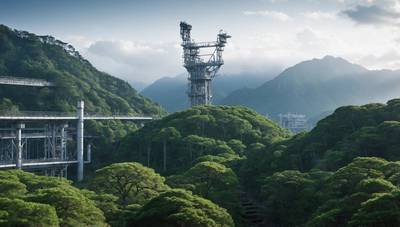Japan has a plan to make green steel work.
The energy transition is a major challenge, and one of them is decarbonising steel production. This is especially true when consumers around the world are unwilling to pay more money for greener steel products.
In order to achieve this, government policies and regulations will likely be used to set prices in a sector that is responsible for 8% of the global carbon emissions.
It is a debate about which policies will produce the fastest and best results. Options include subsidising green plants or green steel products, as well as instituting carbon taxation to encourage producers to change their methods of making steel.
Japan, the third largest steel and vehicle producer in the world, recently announced new policy measures that could provide incentives to consumers, manufacturers, and steel makers.
The Ministry of Economy, Trade and Industry has announced a subsidy of 50 000 yen ($330), for Clean Energy Vehicles (CEVs), built from low-emissions steel.
The consumer subsidy introduced last year was up to 850,000 for an electric vehicle, and up to a maximum of 550,000 for a plug in hybrid electric vehicle.
According to Matt Pollard of the clean energy consultancy Climate Energy Finance, METI's plan will allow automakers to submit information on their low-emissions steel purchases and then allocate subsidies according the percentages of green steel used.
Pollard stated that "in a broader context it is important that METI publicly releases the carbon accounting methods, green product definitions, and emission thresholds they will use to determine which products and producers will benefit from models approved under this new subsidy scheme."
How all of this works will determine if it's successful or not.
The Japanese steel industry produces around 85 million metric tonnes a year. Most of this is produced in blast furnaces that use coal. This makes it more polluting then the U.S. steel sector, EU steel sector, and China steel sector, all of which have greater electric arc furnace capacities.
The steel industry in Japan may be tempted to change, but which technologies and processes are key?
GREEN OPTIONS
One method has been suggested: using hydrogen to convert iron ore upgraded to direct reduced iron (DRI), or hot briquetted (HBI), but Japan doesn't have enough renewable electricity to make green hydrogen.
Importing of hydrogen is unlikely as well, given the difficulties in liquefying a volatile material and shipping it.
The use of electric-arc furnaces, which require high-grade ore (DRI or HBI), is another option.
To be green, electric arc furnaces must also be powered by renewables and nuclear energy. Japan's electricity is currently mainly generated by coal and liquid natural gas.
To make the subsidies work, you need to be able to produce green-steel at a cost that is at least as high, or even lower than the level subsidy.
Can steel producers make a profit if Japan provides $330 for an electrical vehicle made from low-emissions steel?
According to a study by the clean energy think-tank Transition Asia, the premium for making steel in China with green hydrogen and DRI is $225 per ton. This equates to a cost of $203 per vehicle if the average passenger car uses about 0.9 tons of steel.
Transition Asia data showed that green steel costs in Japan and South Korea were slightly higher than China, but lower than the European Union.
Costs will vary by country. However, the research suggests that even modest subsidies can be enough to encourage steel producers to produce green steel, automakers to switch over to it, and consumers to buy the finished product.
These are the views of the columnist, who is also an author. (Editing by SonaliPaul)
(source: Reuters)












